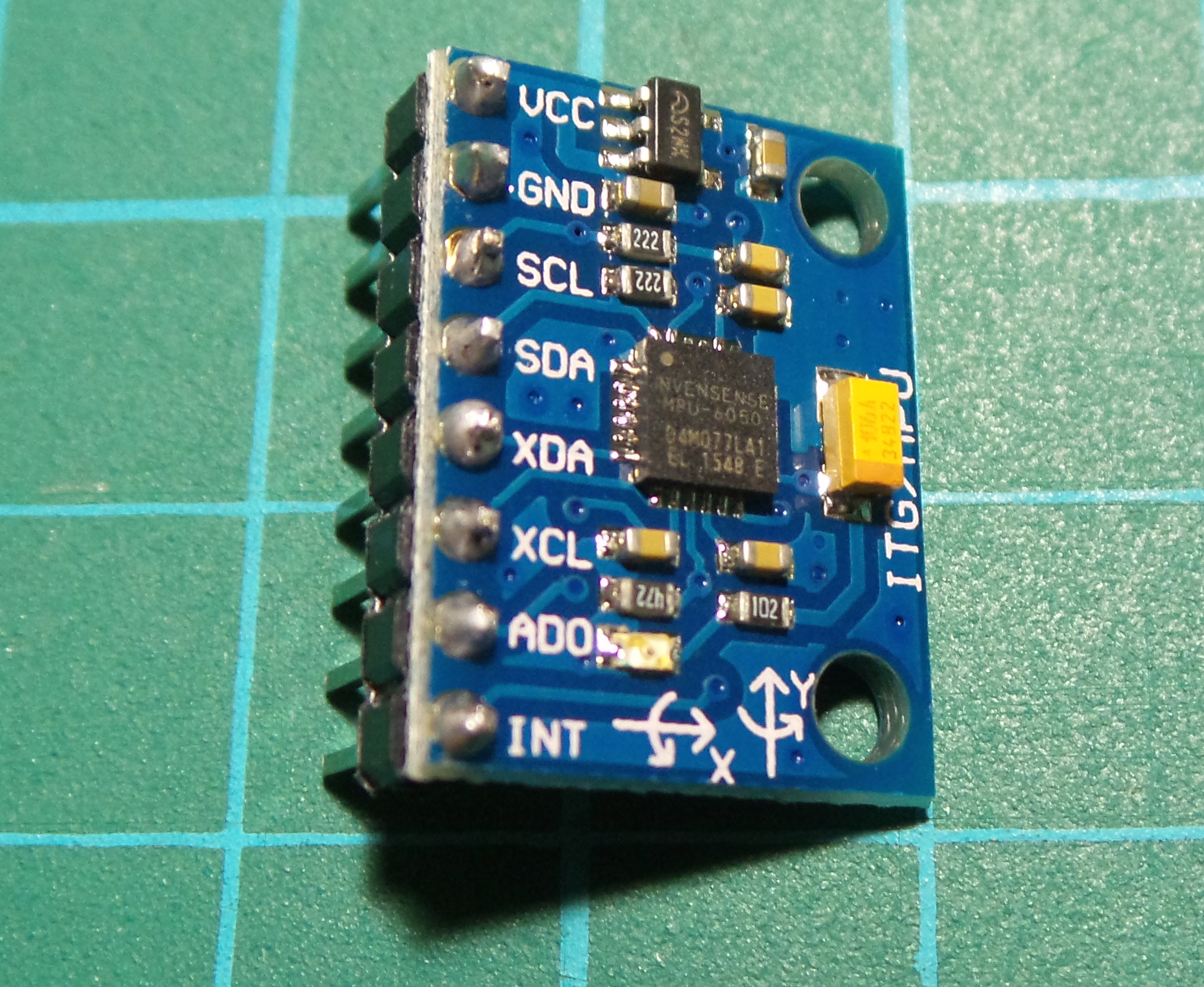LEAP#218 MPU-6050 3-Axes Accelerometer Gyroscope Module
I'm planning to build a controller that needs motion detection, so got hold of an Invensense MPU-6050 3-Axes Accelerometer Gyroscope Module to see if it would do the trick. The module conveniently operates on 3-5V. All I've done so far is a simple sketch to confirm I can read raw values from the MPU-6050 using the Arduino Wire library.
As always, all notes, schematics and code are in the Little Electronics & Arduino Projects repo on GitHub.
read more and comment..
LEAP#217 Basic AVR-controlled Buck Converter
Buck converters are switching power supplies configured such that the output voltage is lower than the input voltage.
Since the primary components (inductor and capacitor) ideally consume no power, high conversion efficiencies are possible. In practice of course, components are not ideal and there is some power loss. More significant however is any power consumed in the control and feedback circuits.
This circuit is a demonstration and exploration of the basic buck configuration with a fixed load. Since the load is fixed, I have not implemented any feedback control system. Of course there are plenty of buck converter chips and modules on the market and these are so cheap you'd be crazy (or have such precise and unusual requirements) to build your own for a real application. But it's nice to see how they work!
My inspiration for this circuit was DIY Buck Converter by GreatScott! - IMHO the "missing lab" to accompany very good but dry courses such as the Power Electronics Specialisation from University of Colorado Boulder.
As always, all notes, schematics and code are in the Little Electronics & Arduino Projects repo on GitHub.
read more and comment..
LEAP#216 OSHChip driving SPI LED module
How easy is SPI with the OSHChip? I thought I'd find out by first controlling a module that has a very basic SPI-ish slave interface.
I'm using the LEDx16Module that I designed in the KiCad like a Pro course from Tech Explorations. It has dual 74HC595 shift registers that can be driven with SPI to control 16 onboard LEDs.
As always, all notes, schematics and code are in the Little Electronics & Arduino Projects repo on GitHub.
read more and comment..
Feature Lifecycle Analysis with PivotalTracker
Can you trust your agile planning process to deliver the best result over time?
In an ideal world with a well-balanced and high-performing team, theory says it should all be dandy. But what happens when the real world sticks it's nose in and you need to deal with varying degrees of disfunction?
Feature Lifecycle Analysis is a technique I've been experimenting with for a few years. The idea is to visualise how well we are doing as a team at balancing our efforts between new feature development, refinement, maintenance and ultimately feature deprecation.
If you'd like to find out more, and run an analysis on your own projects, try out the Feature Lifecycle Analysis site. It includes some analysis of two real software development projects, and also a tool for analysing your own PivotalTracker projects.
As always, all notes, schematics and code are on GitHub.
read more and comment..



